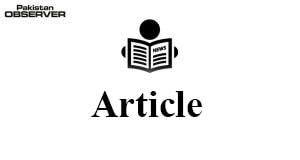Process of knowledge: Role of libraries
ACCORDING to Oxford Dictionary, knowledge is: “Facts, information and skills acquired through experience or education, the theoretical or practical understanding of a subject.”
There are numerous types of knowledge such as empirical, encoded, descriptive, dispersed, domain knowledge. However, three main types of knowledge are Explicit, Implicit and Tacit. The knowledge that can be found in documented information is called explicit knowledge.
The knowledge that one can be applied is considered implicit knowledge and tacit knowledge is what we know, the understood information. The knowledge can be processed through a common infrastructure.
According to Richard E-Rubin (A prominent Scholar of Library and Information Science), “The knowledge infrastructure is composed of the informational, recreational, educational, and cultural components of our society.”
It can be viewed as how knowledge and information are created, disseminated and used in society.
In the traditional set-up, the knowledge process was processed with five factors: creator; these included artistes, authors, etc who embodied their ideas in physical shapes or production.
These creators are still playing an eminent role in society. They contribute knowledge in order to abreast the people with ideas which are lacking them.
The second factor includes products, products are available in common shapes such as Books, paintings, articles, databases, websites and other contents available in digital and other formats.
The third factor of the Knowledge process is Distributors: publishers, vendors, the Web, etc. They also play a positive role and transmit knowledge through various means.
The fourth factor of the knowledge process is Discriminators. These are the most important pillar in knowledge dissemination which includes institutions, agencies and libraries.
The fifth factor of the Knowledge process is users. This is the most prominent factor in the knowledge process.
The above four processes are working for the users of knowledge. The Creators, Products, Distributors, Discriminators are producing the knowledge for users. If there is no user, all the four processes are regarded as null and void.
Modern Information Technology has altered the traditional process of knowledge. In today’s age, creators are the discriminators and distributors and no other agencies have been evolved to distribute the knowledge for outreach. Users are targeted and pre-planned and creators are targeting the end-users while producing the new knowledge.
Traditionally, the role of libraries and archives and museums was as dissemination, serving as an intermediary between users, distributors and creators.
However, the advanced technology created a new possibility for creators to distribute their knowledge frequently. Today, a novelist can write a novel and put it on the internet; similarly, musicians can distribute their music online for free or for a fee.
There are three main areas of knowledge management, ie, Accumulating knowledge, Storing knowledge and Sharing knowledge.
Libraries are hubs, where knowledge is required, stored and shared for study, research and reference purposes. The knowledge-based economy has become a buzzword for the last few decades.
It has been observed that Libraries are extensive platforms for quality knowledge. There should be strong libraries that could support the readers to access the organizational goals in achieving the organizational goals.
Knowledge management requires linkages of information with information, and libraries have dealt with this subject since its inception.
Libraries help in both implicit and explicit knowledge. As mentioned earlier, traditionally, libraries were collecting, organizing and storing the knowledge, but libraries have become treasurer houses of human knowledge in the economic age.
The 21st Century libraries are facing several challenges. Soon, the library will inevitably face the new subject of knowledge management.
Now the question arises that how the process of knowledge can be managed in libraries. In this regard, P Galagan has suggested some rules which include producing of new knowledge , use of external sources for accessing this knowledge, projecting the knowledge in documented form like database, software etc, embedding the knowledge, transferring knowledge around the organization, Facilitating knowledge and measuring knowledge value through knowledge management.
There are various strategies for knowledge creations, but libraries should adopt a knowledge-centred strategy which helps in creation of new knowledge. Librarians should focus on building a knowledge conducive culture.
—The writer is a library officer at the Institute of Strategic Studies Islamabad.










